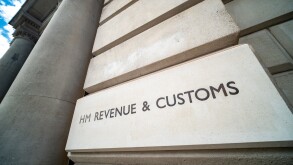Figuring out how to tax the inputs used in the production of energy products and electricity under the European Energy Taxation Directive (Directive 2003/96 – ETD) is the legal equivalent of Warren Robinett’s famous ‘Easter egg hunt.’
The ETD is based on the principle that taxation should be levied on end products, regardless of inputs used in their production. The taxation of end products is not an absolute principle under the ETD, however. The directive provides some exceptions to the rule, under different terms for energy products and electricity.
If electricity is the end product, then the energy products and electricity used as inputs are exempt, irrespective of whether they are produced on-site. The exemption is not mandatory, however, and may be derogated by member states for environmental reasons. Member states may therefore tax both the coal used in a thermal power station and the ensuing electricity if it is a better fit for their climate policy.
If energy products are the end-product – motor fuels being a case in point – energy products used as inputs are excluded from tax when manufactured on-site. This exclusion is mandatory, however, and cannot be derogated by member states for reasons of any kind. Quite the opposite, member states are allowed to extend it to energy products and electricity even when not produced on site.
These rules are complex for reasons old and new, namely the traditional practice of exempting industrial self-supplies, on the one hand, and modern environmental concerns and the lack of a CO2 component in the ETD, on the other.
Depending on the options exercised by member states, the application of the ETD thus may lead to situations of double taxation of inputs and outputs, as well as to disputes in connection with the definition of the end-use at stake: when and to what extent can a given input be associated with a given output? These are questions faced by many companies in the energy sector.
CJEU clarification
These questions have been referred time and again to the Court of Justice of the EU (CJEU).
Regarding the generation of electricity, the CJEU has made it clear that the input tax exemption has a direct effect on the member states’ legal order and that derogating from the exemption requires a positive decision by member states and the evidencing of the environmental aims pursued (C-226/07, Flughafen Köln/Bonn, July 7 2008).
If inputs, such as natural gas, are only partially used in the generation of electricity, the exemption should be apportioned according to the volume of each output (C-31/17, Cristal Union, March 7 2018). National authorities must further abide by the principle of proportionality when setting the proof requirements relating to the use of inputs (C-90/17, Turbogás, June 27 2018).
Regarding the production of energy products, the CJEU has clarified that the input tax exclusion only applies if the final products are taxable themselves because this is the only case giving rise to the problem of double taxation the directive seeks to prevent (C-49/17, Koppers Denmark, June 6 2018).
The CJEU also made clear that the input tax exclusion extends to intermediate products, for instance when heating oil is consumed in a power plant to generate energy that is subsequently used to manufacture energy products (C-68/18, Petrotec-Lukoil, November 7 2019).
Further, the CJEU has ruled that if non-energy products are merely residual to the manufacturing process, for example when sulphur is generated as a result of refining crude oil, the input tax exclusion cannot apply in full and must be apportioned according to the volume of each output (Repsol Petróleo, C-44/19, December 3 2020).
Moving forward
The CJEU has done a remarkable job of interpreting the ETD, but the steady stream of referrals on the matter is evidence that rules devised 20 years ago no longer afford the certainty and neutrality that companies in the energy sector need.
The latitude of the ETD has led to the introduction of many non-harmonised taxes on energy products by member states, the application of exemptions with much different outlines and the proliferation of cases of double taxation between inputs and outputs with no obvious rationale.
The European Commission is currently in the process of revising the ETD. There is no better opportunity to establish simpler and more certain rules and spare operators and tax authorities the needless litigation costs they have been facing.
Sérgio Vasques
Founding partner, Lobo Vasques
E: sergio.vasques@lobovasques.com










